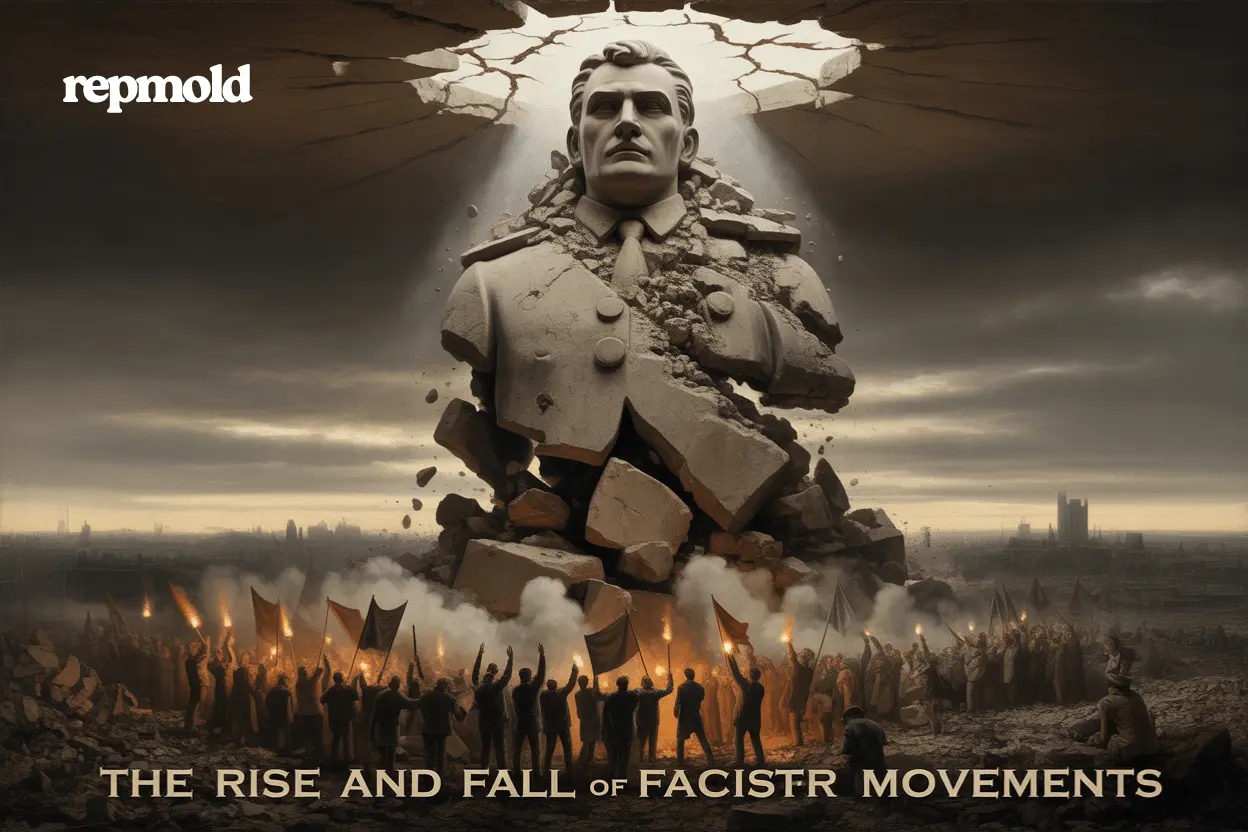Introduction: Understanding Fascisterne
The term “fascisterne” refers to fascists, mainly in Danish and historical contexts. It describes groups or movements that promote extreme nationalism, authoritarian rule, and strict social control. Understanding this term helps us explore how such movements rise, gain power, and impact societies.
Studying fascisterne is important today because its ideology still echoes in modern politics. Many far-right groups adopt similar tactics, including propaganda, fear-mongering, and suppression of dissent. By examining history, we can recognize warning signs before authoritarianism spreads.
Fascist movements have left lasting scars on nations, influencing culture, politics, and human rights. Their history reminds us that unchecked power and intolerance can devastate societies. Consequently, learning about fascisterne equips readers to safeguard democracy and promote social harmony in the present world.
Origins of Fascisterne
The origins of fascisterne trace back to post-World War I Europe. Societies were devastated, economies collapsed, and political systems struggled to recover. Widespread unemployment and social unrest created fertile ground for extremist ideologies.
In Italy, Benito Mussolini seized this moment of chaos. He formed the National Fascist Party in 1921, promising national revival and strong leadership. Through propaganda, rallies, and intimidation, Mussolini attracted war veterans and disillusioned citizens. By 1922, the March on Rome allowed him to rise to power legally and symbolically, marking the first major fascist regime in Europe.
Soon, fascisterne ideas spread beyond Italy. In Germany, Adolf Hitler adapted these principles, emphasizing racial nationalism and authoritarian control. Similarly, Spain under Francisco Franco and other European nations saw the emergence of fascist-inspired movements. These expansions demonstrated how economic crises, fear, and political instability fueled the growth of fascisterne across Europe.
Ideological Foundations
The ideology of fascisterne is built on several core principles. Ultranationalism places the nation above individual rights, demanding loyalty and devotion. Authoritarianism enforces centralized power, often under a single leader who embodies the state. Militarism glorifies war and strength, portraying conflict as a means to national greatness.
Racism also played a central role, framing certain ethnic groups as inferior. Anti-communism helped fascisterne movements unite citizens against perceived political threats. Totalitarianism allowed regimes to control all aspects of society, from education to culture, leaving little room for dissent or free thought.
Philosophers like Giovanni Gentile provided intellectual support, arguing that the state should be absolute. His ideas legitimized authoritarian governance and shaped the policies of Mussolini and other fascist leaders. Overall, these ideological foundations created a powerful, yet dangerous, framework. They mobilized mass support while suppressing diversity, freedom, and critical thinking.
Key Figures and Their Impact
The rise of fascisterne was shaped by influential leaders who defined its course. Key figures include:
- Benito Mussolini – The prototype of fascist leadership. He emphasized strong nationalism and centralized authority. Mussolini used propaganda, rallies, and violence to maintain control. His rise in Italy inspired similar movements across Europe.
- Adolf Hitler – Radicalized and expanded fascist ideology in Germany. He combined ultranationalism with racial supremacy theories. Hitler perfected propaganda techniques and built a cult of personality, mobilizing millions. His policies led to global conflict and unprecedented atrocities.
- Francisco Franco – Implemented a fascist-inspired dictatorship in Spain. He emphasized authoritarian control, nationalism, and suppression of dissent after a brutal civil war.
- António Salazar and other European leaders – Adapted fascist principles to local contexts. Their regimes promoted state control, limited opposition, and reinforced social hierarchies.
Together, these figures left a lasting imprint, demonstrating how leadership, ideology, and charisma fueled the spread of fascisterne.
Methods of Gaining and Maintaining Power
Fascisterne movements gained control through multiple strategic methods. First, they exploited crises and societal fear. Economic instability, war, and political unrest created opportunities for radical solutions. Leaders blamed minorities or political opponents, offering simple answers to complex problems.
Next, propaganda, censorship, and the cult of personality reinforced authority. Media, schools, and public events promoted loyalty and glorified leaders. Dissenting voices were silenced, and citizens were encouraged to idolize the state and its figurehead.
Paramilitary violence and suppression of dissent played a crucial role. Groups like the Blackshirts in Italy and the SA in Germany intimidated opponents, demonstrating the cost of resistance. Fear ensured obedience and discouraged public opposition.
Finally, legal and political manipulation allowed fascisterne to consolidate power. Laws were twisted to legitimize authoritarian control, elections were rigged, and democratic institutions were undermined.
Together, these methods created a system where power was absolute, opposition minimal, and fear a constant tool.
Societal and Cultural Impact
Fascisterne movements left deep marks on society and culture. First, they controlled education, culture, and national identity. Schools, media, and arts were reshaped to glorify the state. Citizens were taught to prioritize loyalty over personal freedom.
Next, economic policies emphasized corporatism and state intervention. Businesses, labor, and agriculture were organized under government supervision. The state guided production and employment to serve national interests rather than individual or market needs.
Additionally, repression of minorities and human rights atrocities became central. Ethnic, religious, and political groups faced persecution. Discrimination, imprisonment, and even mass violence were used to enforce conformity. Fear and oppression permeated daily life.
Overall, fascisterne reshaped societies, leaving lasting legacies of control, inequality, and cultural manipulation. Their impact continues to remind us of the dangers of unchecked power.
The Fall of Fascisterne Movements
The decline of fascisterne movements came with World War II and military defeat. Allied forces overwhelmed Italy, Germany, and other fascist regimes. Their armies collapsed, and territorial control was lost.
Next, the Nuremberg Trials brought key leaders to justice. High-ranking officials faced charges of war crimes and crimes against humanity. These trials set global legal precedents and exposed atrocities to the world.
Following this, countries implemented de-fascistization and reconstruction efforts. Germany and Italy reformed political systems, banned fascist symbols, and promoted democratic governance. Education and public awareness programs helped prevent extremist resurgence.
Ultimately, the fall of fascisterne movements teaches critical historical lessons. It highlights the dangers of authoritarianism, unchecked nationalism, and suppression of human rights. Remembering this history safeguards democracy for future generations.
Modern-Day Echoes of Fascisterne
Today, neo-fascism and far-right movements have emerged in several countries. They often borrow ideas from historical fascisterne. These groups exploit nationalism, fear, and division to gain support.
Social media and digital propaganda amplify their influence. Platforms allow extremist messages to spread rapidly, reaching wide audiences. Online echo chambers reinforce radical beliefs and mobilize followers.
These movements pose serious threats to democracy and civil liberties. They attack free press, weaken institutions, and target minorities. Populist leaders may use authoritarian tactics reminiscent of past fascist regimes.
Understanding these modern echoes is essential. Awareness, education, and civic engagement help societies resist extremism and protect democratic values.
Lessons from History
History teaches us to recognize authoritarian patterns before they threaten society. Early warning signs include censorship, propaganda, and attacks on minorities.
Civic education and democratic engagement are crucial. Citizens must understand their rights and responsibilities to safeguard freedom. Voting, activism, and public dialogue strengthen democracy.
Promoting tolerance, inclusivity, and human rights prevents repetition of past mistakes. Societies thrive when diversity is respected and inequality is challenged.
By learning from the rise and fall of fascisterne, communities can resist extremism. Awareness and action today protect future generations from authoritarian threats.
Conclusion: Reflection on Fascisterne Legacy
The rise and fall of fascisterne movements teach important historical lessons. They reveal how extremist ideologies can exploit fear, nationalism, and instability.
Vigilance against such ideologies remains essential today. Societies must recognize early warning signs and act responsibly. Education, civic participation, and critical thinking are key tools.
Learning from history empowers citizens to protect democracy and human rights. By promoting tolerance and inclusivity, communities resist authoritarian control.
Ultimately, remembering the fascisterne legacy encourages reflection and action. Each individual plays a role in safeguarding freedom and preventing history from repeating itself.

